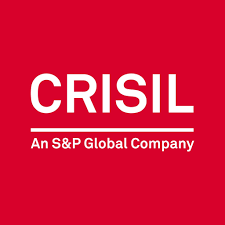India’s cotton and polyester yarn sector outlook bright for FY25: CRISIL
A recent panel discussion by CRISIL titled ‘Upstream textiles sector: Threads of promise’ shed light on the future of the cotton yarn and polyester yarn segments in India. Here's a breakdown of the key takeaways for FY25:
Cotton yarn industry
- Moderate revenue growth: CRISIL anticipates a 4-6 per cent rise in revenue, driven by improved downstream demand, stable yarn prices, and better cotton availability. This follows a projected decline of 5-7 per cent in FY24.
- Improved profitability: Margins are expected to recover to 10-10.5 per cent from 8.5-9 per cent in FY24. This is due to a combination of factors: lower raw material prices, reduced inventory losses, and wider cotton-yarn spreads (the difference between cotton and yarn prices).
- Limited capex: The industry witnessed a halt in major capacity expansion plans in FY24 due to stressed margins. While a slow revival is possible in FY25, significant capex is unlikely unless exports pick up substantially. Experts believe margins need to reach 8-10 per cent to justify fresh investments.
- Export challenges: Subdued global demand, particularly from the US and Europe, may restrict export growth. However, opportunities exist in untapped markets like Japan and Africa. Additionally, the anticipated India-UK Free Trade Agreement could be a major advantage.
- Stable credit outlook: Despite margin fluctuations in FY24, CRISIL expects credit profiles of cotton yarn spinners to remain stable in FY25. This is attributed to deleveraged balance sheets and improved cash flow generation.
- Working capital normalization: As per CRISIL working capital requirements will return to normal with regular cotton supply, easing pressure on cotton yarn players' finances.
Polyester yarn industry
- Moderate revenue growth: CRISIL forecasts a 2-4 per cent rise in revenue, following a flat FY24 due to cheap Chinese imports. This growth is expected to be supported by the implementation of Quality Control Orders (QCOs) restricting such imports, and a gradual increase in volumes.
- Improved profitability: Margins are expected to improve by 50-100 basis points to 6.5-7.5 per cent in FY25. Lower raw material prices (PTA & MEG) and reduced cheap imports of polyester yarn from China are the key drivers. However, dumping of cheaper Chinese polyester fabrics could still pose a threat.
- No major capex planned: The industry recently added 5-6 per cent of its capacity, which will be operational in FY25. Consequently, no major capex is planned for the coming year.
- Declining exports: CRISIL expects a 15-17 per cent decline in polyester yarn exports. This is due to continued Chinese dumping and currency devaluations in key export markets like Egypt and Turkey. Additionally, some export sales might be diverted to the domestic market due to potentially better pricing.
- Stable credit outlook: Similar to cotton yarn, CRISIL expects the credit profiles of polyester yarn manufacturers to remain stable in FY25 due to capacities added in the past two years reaching operational stability. Debt levels are expected to remain stable.
- Working capital stability: No major changes are foreseen in working capital requirements for polyester yarn manufacturers.
Key risks
- Cotton yarn: Adverse movements in domestic and international cotton prices could impact revenue and margins.
- Polyester yarn: Volatility in crude oil and raw material prices, along with changes in government regulations, could adversely affect imports and lead to increased dumping of cheap polyester fabrics.
Overall, the outlook for cotton yarn and polyester yarn industry in FY25 is cautiously optimistic. While both segments are expected to witness moderate revenue growth and margin improvements, challenges remain, particularly on the export front. The success of government initiatives like QCOs and the potential for new export markets will be crucial factors to watch.

April 11, 2024
View: 209
